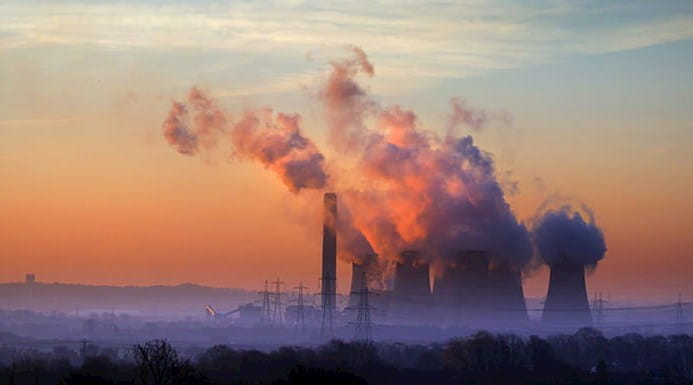Many businesses are making voluntary net zero pledges with differing timelines. For these commitments to be ‘Paris-aligned’, these pledges need to be backed by meaningful and measurable action to reach net zero by 2050. To do this, directors and senior management first will need to ensure that their strategies and operations align with the Paris Agreement objectives.
As companies work towards Paris-aligned strategies, preparers of financial statements can play a key role by reporting on progress through the annual report and accounts. How they do so will depend on where the business is on its net zero transition journey and their interdependency with others, like suppliers and regulators, along the way.
For those in the early stages, much of the focus will be on narrative disclosures – however, as the business progresses and changes in light of climate change, so too will the numbers in the financial statements, to reflect new strategies and assumptions. As accountants in business begin to grapple with these issues, the following five considerations may help with preparing accounts that reflect the net zero transition of the business.
1. What is material to the users of your accounts? What do investors expect in relation to climate and net zero transition risk disclosures and assumptions?
Preparers must make judgements on materiality as they prepare the annual report and accounts. Information is material if omitting, misstating or obscuring it could reasonably be expected to influence the decisions of primary users.
While climate-related issues, such as net zero transition plans, are not explicitly referred to in international financial reporting standards (or UK GAAP), companies must consider these matters when their impact is material in the context of the financial statements as a whole.
The IASB has issued educational material for IFRS preparers on how to consider materiality in relation to climate-related risks.
Preparers may find it useful to consider the following questions:
- Are there qualitative factors relevant to the business that would make investors reasonably expect the impacts of climate change and energy transition, as part of achieving net zero targets, to affect the numbers and disclosures in the accounts?
For example, investors in the oil and gas sector would likely consider net zero transition as material to their decision making. Likewise, investors in businesses with carbon-dependent supply chains, or carbon intensive products, such as automobile manufacturers, may view future plans as material. In both cases they will be interested in understanding how changing demand and regulation will impact these types of businesses, and how management intends to respond. - Are there potential climate-related regulatory or external risk factors that may impact the company and investor decision-making?
For example, government plans for additional carbon regulation or taxes may increase transition risks and may result in a need to accelerate plans. These factors may mean investors wish to see more information on how directors plan to respond to these risks. - Are there indications that investors have explicit expectations regarding net zero transition plans?
For example, investors may have indicated in shareholder meetings the importance they attach to robust net zero transition plans. Directors will need to consider these explicit expectations. These expectations may warrant disclosures on how directors have considered climate and net zero transition regardless of numerical impact.
2. What is the impact of the directors’ net zero transition plan on accounting assumptions or significant judgements?
IAS 1 requires disclosure of assumptions made by directors about the future that carry a significant risk of a material adjustment to the reported amounts of assets and liabilities within the next financial year. Many net-zero transition plans cover periods of time that extend far beyond the next financial statement period – this may mean, for example, that changes to assumptions may not carry a significant risk of material adjustment to the financial statements in the next financial year and hence there may not be, in all cases, adjustments immediately after making a net zero transition pledge.
However, it is worth considering:
- How do future plans impact assumptions underlying key estimates, such as expected future cash flows?
For example, might transition plans reduce the life of certain long-life assets used in carbon intensive industries? Could plans accelerate the need to pay decommissioning obligations associated with the winding down of activities? - How do these plans impact going concern, and where relevant, longer term viability considerations?
For example, certain parts of the business may not be viable in a carbon neutral economy. Are there longer-term risks to the business as a whole? What stress testing has management considered in relation to net zero transition?
3. Do any numbers need to be adjusted to reflect net zero transition plans, for example valuations of assets, or is there a need to recognise provisions?
As businesses progress on their net zero transition journey, their actions may necessitate further adjustments to carrying values or a need to recognise additional provisions. Likewise, even businesses without net zero strategies will need to consider climate risks due to the pervasiveness of climate change.
Preparers will need to consider the financial statements as a whole, understanding the impact on all items in the balance sheet and income statement. Questions about the likely impact of net zero transition could include (but are not limited to):
- Are inventory values recoverable? As societal norms change or disruptive technologies decline in cost, it may be that consumer tastes and demands shift away from carbon intensive products. This could result in reduced selling prices or stock write-offs.
- What is the impact of net zero transition on your assets? Will you still be able to use them throughout their full economic life? Some businesses may need to decommission assets sooner than originally planned or alter assets to meet their emissions targets. Assets may need to be impaired and/or useful economic lives shortened.
- Will your net zero transition plan result in any onerous contracts, constructive obligations or other liabilities that may need to be recognised as a provision or reported as contingent liability?
Preparers will need to determine when the strategy meets accounting requirements for recognition when adjusting the financial statements. For example, for IFRS reporters, a future plan to restructure the company will need to meet the requirements of IAS 37 first before a provision may be recognised. In cases where accounting standards do not yet allow recognition of a ‘Paris-aligned’ assumption, it may be helpful to include further disclosures so stakeholders can understand the impact.
More detailed application guidance is available for IFRS reporters here.
4. Are there any additional, voluntary disclosures that may be helpful to users?
In addition to meeting accounting and reporting requirements, preparers may find it useful to stand back and ask whether any additional, voluntary disclosures would help users understand the impact of future climate-related plans on the accounts. For example, Shell Vice President of Group Reporting and Deputy Controller, Edwin Kunkels discussed how the company included voluntary disclosures on emission schemes to provide a holistic overview for readers.
You may wish to include further sensitivity analysis of scenarios considered including, discussing any gaps between the assumptions you’ve used and those required to reach net zero in 2050.
5. Is the narrative in the annual report consistent with the story told by the numbers and accounting judgements presented in the financial statements?
Finally, it is crucial for preparers to reflect on whether there is a consistent story told in both the annual report and the accounts. If a strong, positive net zero commitment is included in the narrative, is this also clearly reflected in the accounting assumptions? For example, does the accounting policy note discuss the impact on estimates?
For some, this may mean explicitly stating that management has considered the impact of climate change but determined that it does not impact or change current assumptions.
Each business’s annual report and accounts should provide a consistent story and allow users to hold directors accountable for progress towards the achievement of the company’s net zero transition plans.
The time for action is now! Our Climate Hub and our Non-Financial Reporting Hub provide more resources and insights to help you on your journey.
Paris-aligned accounts
A look at how accountants in business and practice can align corporate reporting to the Paris Agreement objectives.




